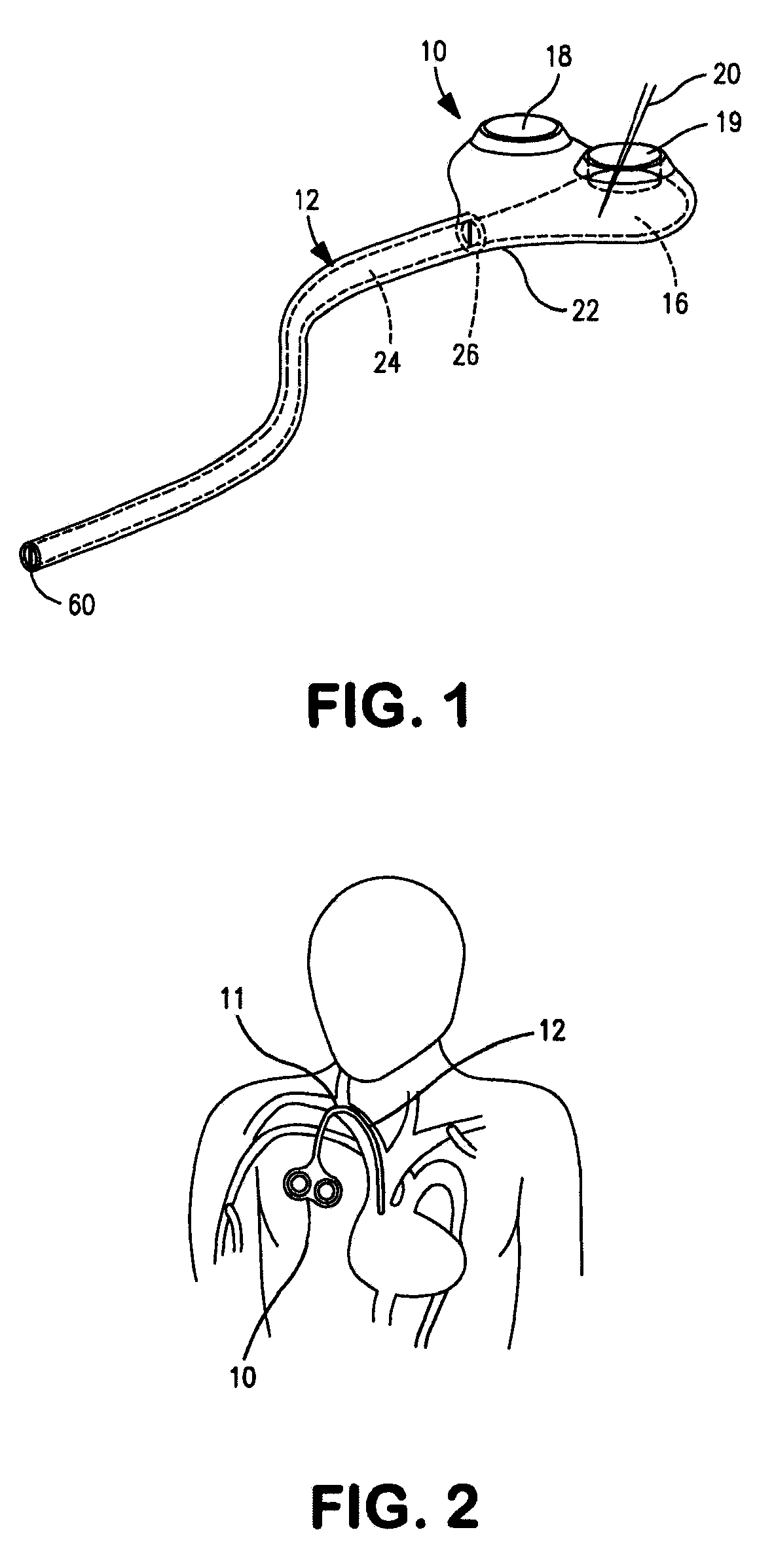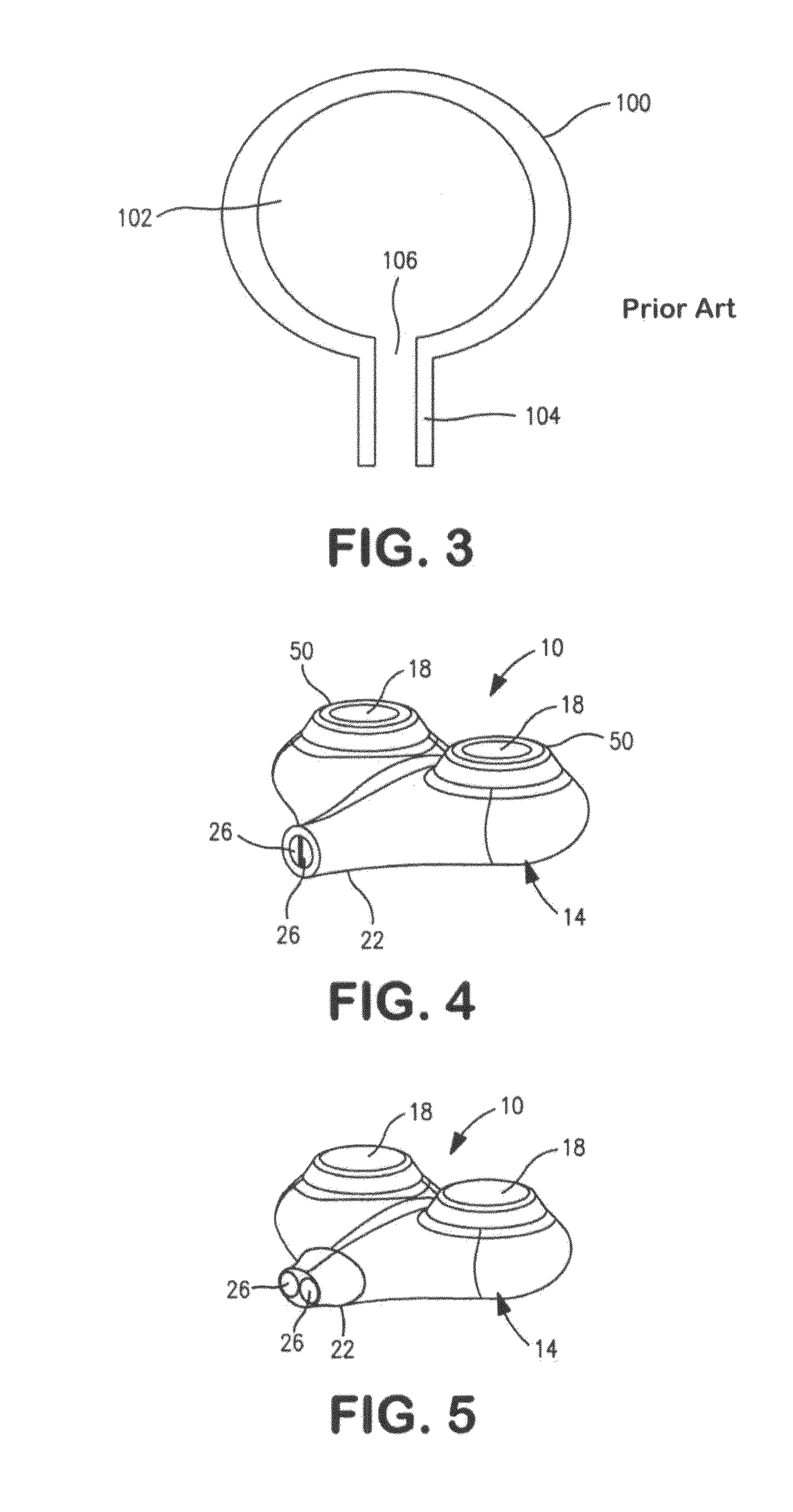Implantable catheter port
a catheter port and implanted technology, applied in the field of vascular access devices, can solve the problems of limiting the port's ability safety and overall useful life of the port, reducing the effectiveness of the port, so as to facilitate sealing, reduce volume, and increase flow
- Summary
- Abstract
- Description
- Claims
- Application Information
AI Technical Summary
Benefits of technology
Problems solved by technology
Method used
Image
Examples
example 1
Flow Visualization of Port Designs
[0092]This example illustrates the superior flow rate characteristics of the tapered and tangential port design of the present invention. A Flow Visualization Experiment (FVE) was conducted showing the benefits of a tangent and tapered outlet port design versus both a tangent but not tapered outlet port design and a centered outlet port design typically used in the art.
[0093]The following port configurations were utilized to conduct the FVE. A tangent and tapered (TT) port design was constructed having a chamber volume of 0.742 ml and having a hydraulic diameter of the outlet (4 times the area of the outlet divided by the perimeter of the outlet) of 2.073 mm. The tangent and tapered design is shown in FIG. 19 wherein R1 is approximately 0.85 inches and R2 is approximately 0.4 inches.
[0094]A tapered not tangent (TNT) port design was constructed having a chamber volume of 0.847 ml and having a hydraulic diameter of the outlet (4 times the area of the ...
PUM
 Login to View More
Login to View More Abstract
Description
Claims
Application Information
 Login to View More
Login to View More - R&D
- Intellectual Property
- Life Sciences
- Materials
- Tech Scout
- Unparalleled Data Quality
- Higher Quality Content
- 60% Fewer Hallucinations
Browse by: Latest US Patents, China's latest patents, Technical Efficacy Thesaurus, Application Domain, Technology Topic, Popular Technical Reports.
© 2025 PatSnap. All rights reserved.Legal|Privacy policy|Modern Slavery Act Transparency Statement|Sitemap|About US| Contact US: help@patsnap.com



